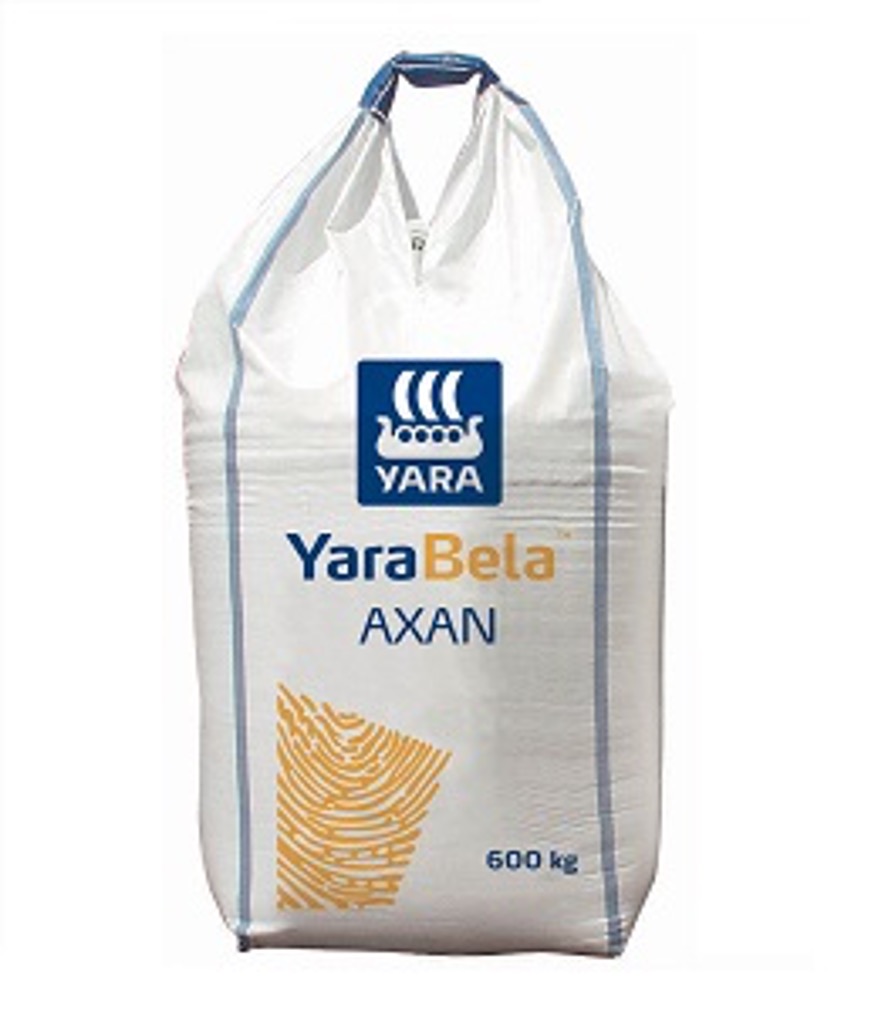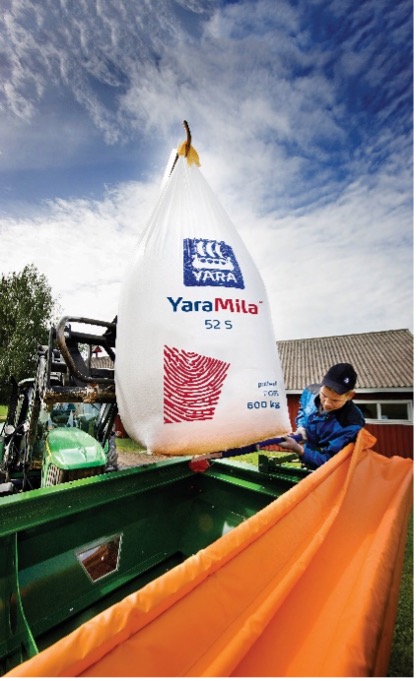Optimise your crop yield through effective fertiliser management in spring
6th February 2023
Thinking of spring, the majority of UK arable soils are deficient in sulphur which means that is needs to be part of the fertiliser strategy. With many buying straight nitrogen products this season, sulphur might need managing differently and you need to be aware of the differences, advises Yara.
The source of sulphur applied makes a big difference. Elemental sulphur has to undergo an oxidation process before it becomes plant-available, this is weather-dependent and could take up to 6 weeks in the spring. Sulphur in the sulphate form is plant-available and therefore the crop can utilise it quickly and efficiently.
Sulphur also increases nitrogen use efficiency, for plants to utilise nitrogen correctly sufficient sulphur levels are required, this is due to the close relationship between the two nutrients. When applying sulphur it should go on little and often, the same way you would apply your nitrogen, because it has the same leachability characteristics in the soil. The addition of sulphur applied in this way typically increases the yield by an average of 0.50-0.85t/ha for oilseed and wheat.
Quality of the product is also a key factor for buying decisions. Does it spread the required distance evenly to give a good spread pattern? Fertiliser is a big investment therefore buying a product that has a good CV, hard granules/prills (no dust), uniform size and shape (no segregation), all nutrients in one granule/prill (even nutrition in the field) and a low emissions means an overall reliable return on investment.
YaraBela Axan (27%N 9% SO3) is a high-quality NS compound which delivers these attributes and more. It is ideal for a multitude of crops when applied throughout the growing season, reducing the requirement of straight nitrogen, for a more efficiently grown crop.

YaraBela Axan
Thinking now of phosphate, research of how P behaves in the soil shows it doesn’t become significantly plant-available until soils reach a temperature of 8°C and above. If we think of soils at the end of February, they’re not likely to have reached this temperature, therefore we are feeding the crops with nitrogen and encouraging growth without them being able to access P from the soil. Couple this with a potentially poor root system and the crop can soon begin to struggle.
The way to combat this is to apply some fresh P in the spring, even if it is a small amount such as 35kg/ha, to give the crop an available source of P whilst it’s waiting for soils to warm up, where it will then be able to access soil-P.
For a simple and effective approach, using a compound NPKS such as YaraMila 52S (20.6-8.2-11.6 + 6.5% SO3) at the first nitrogen timing in the spring will give the crop the 4 key nutrients it requires at the start of its regrowth and set it up for increasing its biomass successfully.

YaraMila 52S into spreader
Whether you drilled cereals early or late, foliar phosphate is an efficient way of getting the nutrient into the plant to aid root growth.
Later drilled crops, in particular, don’t have as long to establish much biomass i.e. decent root systems, before the soils cool and the crops slow down growth for the winter. Phosphate is well-known for its role in plant root development but isn’t plant-available once soil temperatures start to drop. It also easily gets locked up in the soil, with up to 40% of an application of MAP/DAP locked up 2 weeks after application due to becoming attached to ions (such as Al, Fe, Ca) in the soil.
A more effective method of getting phosphate into the plant, when it has a limited root system, is to apply it as a foliar spray. Foliar phosphate uptake is much more efficient when the roots aren’t able to access soil-P, meaning that the later drilled crops can access it.
A micronutrient mixture, YaraVita Maize Boost, is a particularly useful product for application to cereals in the autumn. It not only contains P and K but also zinc and magnesium, both of which aid establishment and help reduce levels of disease infection within a plant.
Independent trial work carried out on two sites in 2021 gave an average yield increase of 1.2t/ha from an application of 3.0l/ha Maize Boost in the autumn, followed by 2.0l/ha Gramitrel in the spring. Another trial in 2022 showed that an application of Maize Boost at T0 followed by Gramitrel (same rates as before) gave 0.6t/ha yield increase. Therefore, whether you can apply Maize Boost in the autumn or early in the spring at T0, there are good returns with an average yield increase of nearly 1t/ha, making it well worth the investment.

Yara Agronomist Natalie Wood

